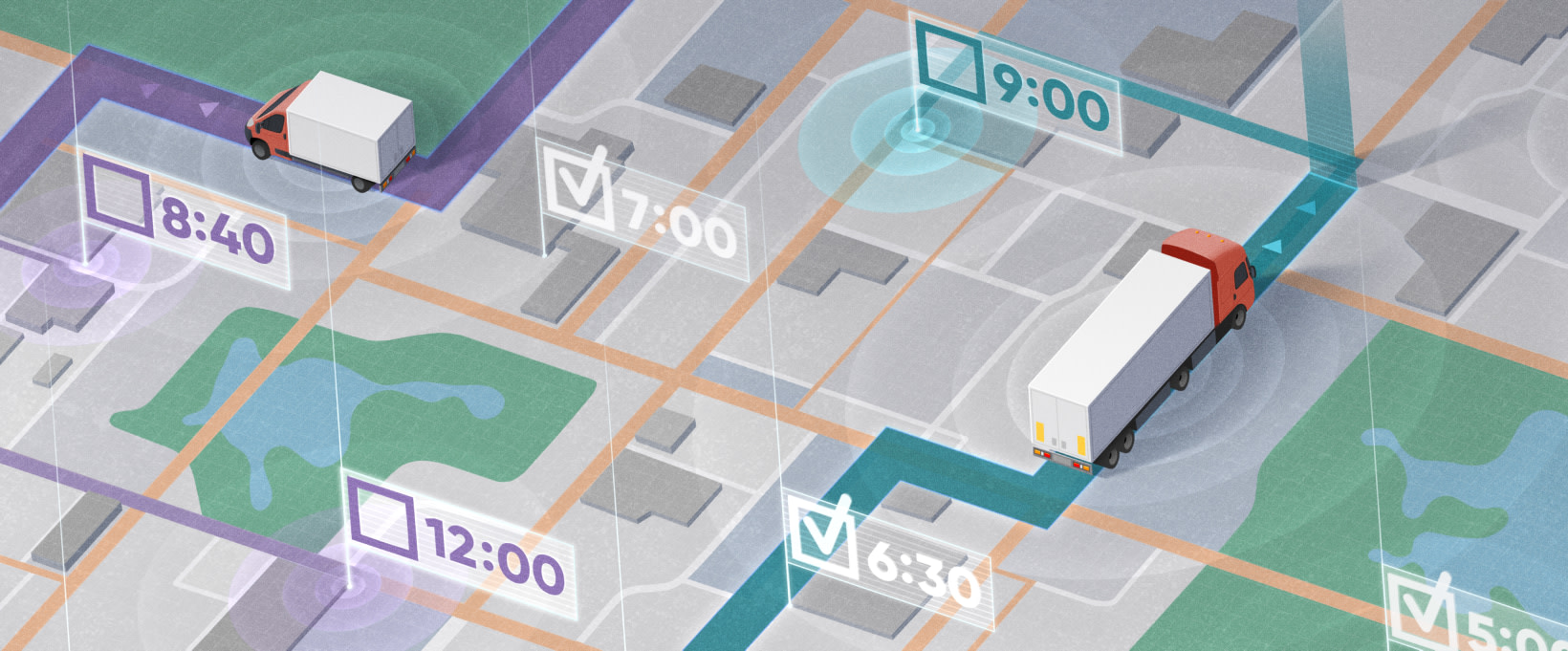- Order fulfillment explained
- Order fulfillment strategies and scaling issues
- Merchant fulfillment
- Dropshipping
- Third-party fulfillment
- Order fulfillment process steps
- Order fulfillment best practices
- Wrapping up
In a world dominated by eCommerce, healthy, cost-effective, and seamless eCommerce order fulfillment patterns are a matter of survival. Being able to quickly receive ordered goods, track them while they are processed by your warehouses and distribution centers, and pick and package them to subsequently ship and deliver them to your end-buyers is what online commerce and logistics are all about. In this piece, we have decided to analyze the best industry practices in this domain.
Order fulfillment explained
Plainly speaking, order fulfillment processes are nothing more than just a sequence of steps taken by a company to execute an order placed by one of its end-buyers. As Shopify, one of the global eCommerce leaders, states, it is ‘the process of preparing and delivering a customer's order.’ However, as usual, it is easier said than done.
Why?
Simply because many end customers are not satisfied with how their orders are fulfilled. This causes significant problems for businesses. According to Econsultancy, the figures are as follows:
- 38% of Internet shoppers will cancel their order if their delivery time is going to take more than a week;
- 16% will cancel their orders if their delivery takes 6-7 days;
- 15% will cancel if they have to wait for 4-5 days;
- Finally, 8% will cancel if delivery is going to take 3 days or even less.
These figures clearly indicate that a modern buyer has no patience. Any order must be delivered ASAP. What makes matters worse, people are not ready to pay an extra price for speed.
Maersk cites a couple of disturbing figures:
- If you take a look at all the eCommerce segments as a whole, the level of shopping cart abandonment will reach 69% across the industry;
- Unexpected costs, in this context, are the main reason why people abandon their shopping carts, with 48% of disappointed buyers leaving for this very reason.
Thus, fast and cheap delivery is the only way to grow in this extremely competitive and challenging market. To meet this requirement, one needs to choose the best matching order fulfillment strategy to scale.
Order fulfillment strategies and scaling issues
Basically, there are three main strategies for order fulfillment. While each is best suited for a particular type of organization, they are quite often combined. Thus, it is necessary to scale between them, depending on the size of your organization and business challenges.
Merchant fulfillment
First, merchant fulfillment means that you assume complete responsibility for your order fulfillment activities. In other words, order fulfillment is an in-house business function you are not entrusting to anyone else. This approach is best suited for SMEs with stable sales. At the same time, this option is also the most popular one globally, with almost 90% of eCommerce businesses being involved in merchant fulfillment, at least to some extent.
Whatever your particular case is, as your business grows, the merchant fulfillment approach might become insufficient. After all, if your sales volume grows and customers are widely dispersed all over the world, you may be unable to handle every parcel on your own.
Dropshipping
Second, the dropshipping model means that you do not deal with order fulfillment at all. End-buyers buy goods, via your eCommerce business, from manufacturers and other companies. So it is their responsibility to deliver the parcels ordered. While this approach is cost-effective and makes it possible for you to serve numerous dispersed purchasers, it gives you virtually no control over the fulfillment process and boxing experience. That is why many big businesses, while practicing dropshipping, also opt for the third model.
Third-party fulfillment
Third, third-party fulfillment is known as a 3PL framework. The latter is known, according to Forbes, as a method uniting all services, e.g. ‘storing inventory, picking and packing orders, shipping and logistics’ and entrusting them to a dedicated fulfillment company. On the one hand, as centers of industry excellence, third-party fulfillment companies can be trusted. On the other hand, their services are expensive. Thus, your business is supposed to be big enough, with sufficient sales volumes to contract them.
Order fulfillment process steps
Order fulfillment strategies notwithstanding, this process features a range of steps that have to be properly taken and covered by your order fulfillment software. Different experts divide the process into different stages; however, in most cases they include:
-
Optimized stock management, i.e. knowing and controlling both the quantity and the quality of the goods you store. Understandably, any successful eCommerce business must be fully aware of the state of its inventory in order to receive and process orders. Hence, your stock receiving must be fine-tuned, with all relevant tracking functionalities in place.
-
Order processing capabilities, i.e. your ability to receive orders, register them, respond to them, and keep the necessary records. This aspect is related to customer relations management, goods flows, and your ability to monitor the progress of any order, including its configuration, booking, confirmation, billing, and adding changes to it when required.
-
Picking, i.e. your ability to quickly find and pick goods once the order is finally confirmed. In this respect, one has to be able to automatically generate and submit picking lists to warehouses, with all the relevant properties and locations clearly specified.
-
Packing, i.e. choosing the best-looking yet durable and adequate packaging, not damaging your goods while packing, making the packaging return-friendly, and attaching trackable labels.
-
Shipping, i.e. delivering the goods to an end-buyer, means you need to be capable of quickly choosing the best route, transportation partner, vehicles, etc. In addition, your company needs to be fully prepared to deal with product returns and refunds.
Order fulfillment best practices
To identify the best practices in eCommerce, one needs to name the most common and challenging problems. Only after that, it is possible to specify the best practices and remedies that can help you deal with them.
In the early 2020s, an interesting survey identified the following priorities expressed by the order fulfillment industry players:
- Fewer errors concerning the order processing flow and greater order accuracy (33%);
- Better packing and handling practices (29%);
- Higher profitability ‘on a per-order basis’ (26%);
- Boosted labor productivity (25%);
- More advanced picking capabilities (25%);
- More effective space utilization patterns (24%);
- Speedier cycles of order fulfillment (24%);
- Total visibility of all inventory in real-time (21%).
How can a modern and flexible order fulfillment company answer these challenges with up-to-date software?
On the basis of our experience, we can propose the following list of recommendations:
- First, your software solution of choice should unite all the customer and order data within a single database;
- In addition to that, the single database must provide you with advanced visualization capabilities so that you can easily track everything, from an individual order to your entire stock;
- Automate as many processes as possible so that your employees are relieved of unnecessary burdens;
- Customize your communication processes with end-buyers;
- Make sure you can generate informative and detailed reports.
Wrapping up
While there is no shortage of retail software, if your order fulfillment process is really challenging, purchasing a custom order fulfillment solution would be the best choice. In this fashion, all your needs will be addressed, so that your software is adapted to your order fulfillment strategies, not vice versa.
At Andersen, we employ dozens of custom software developers, many of whom are focused on order management in logistics. Thus, they are fully prepared to start working on your order fulfillment software development project at any time, delivering tailored-fit, easy-to-use, and powerful web applications for your order management staff.
Contact us to start the development process ASAP.








